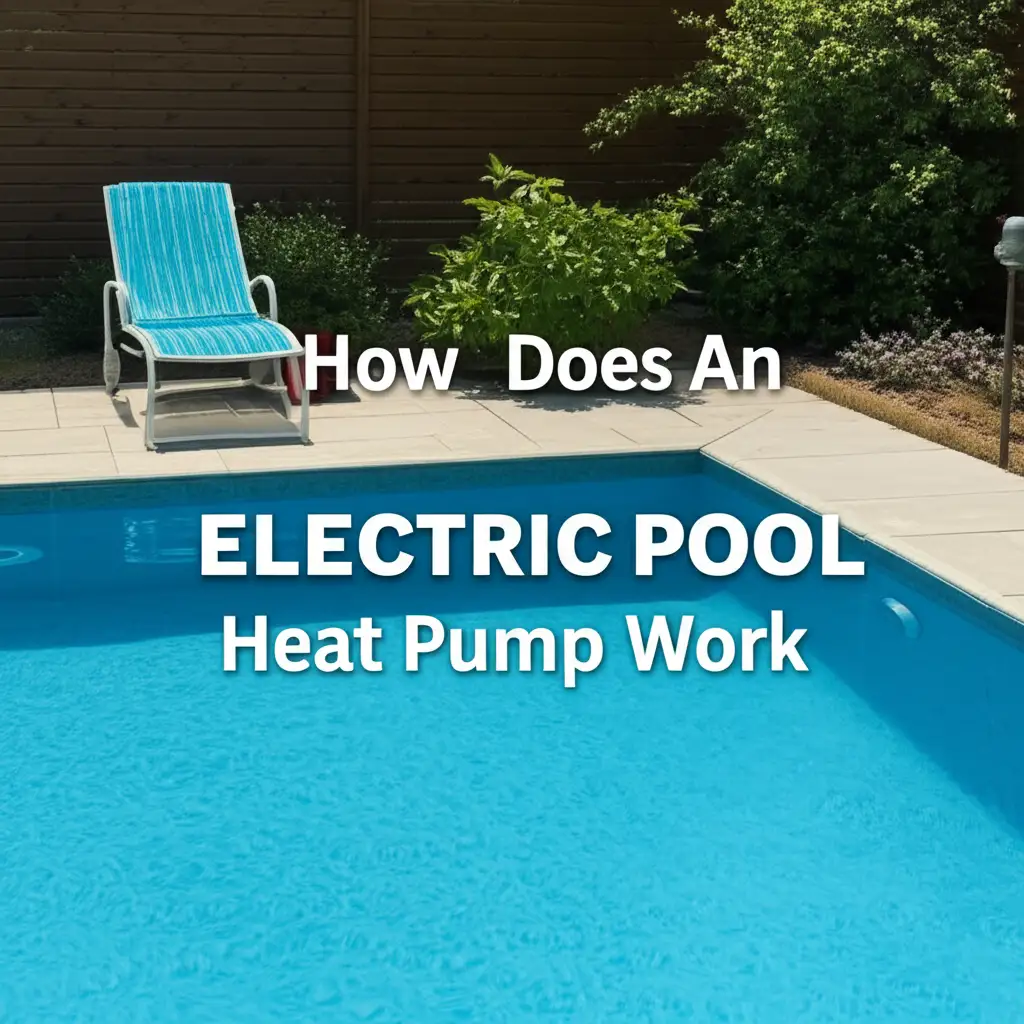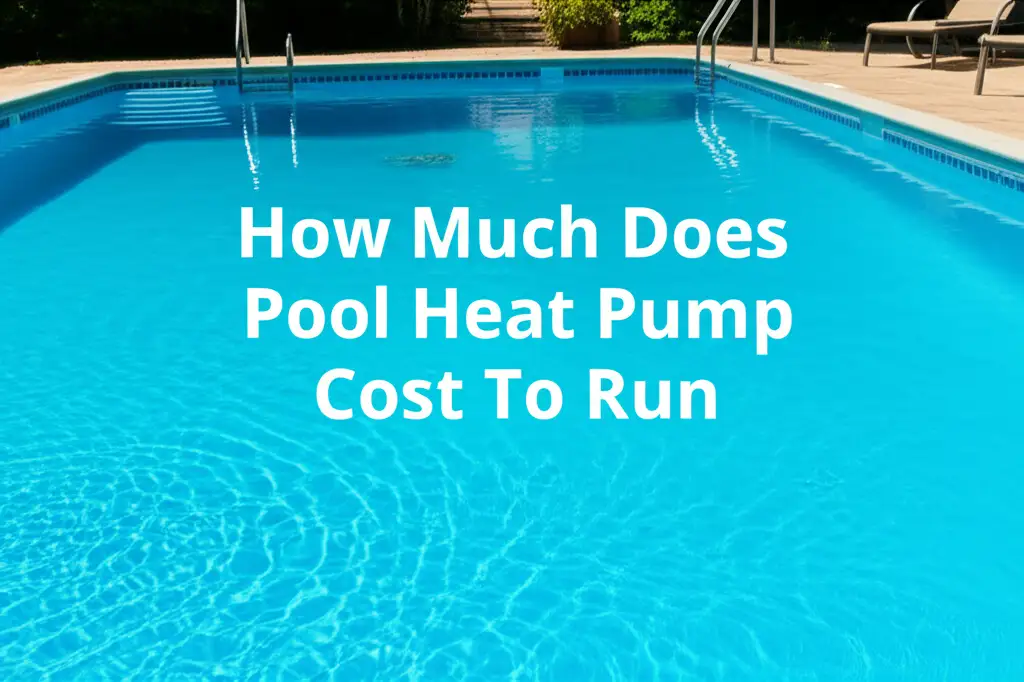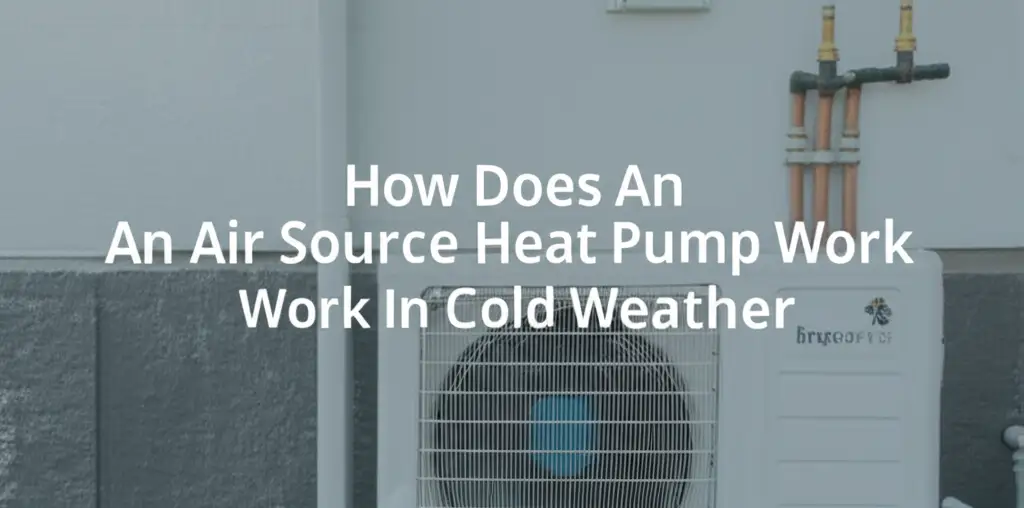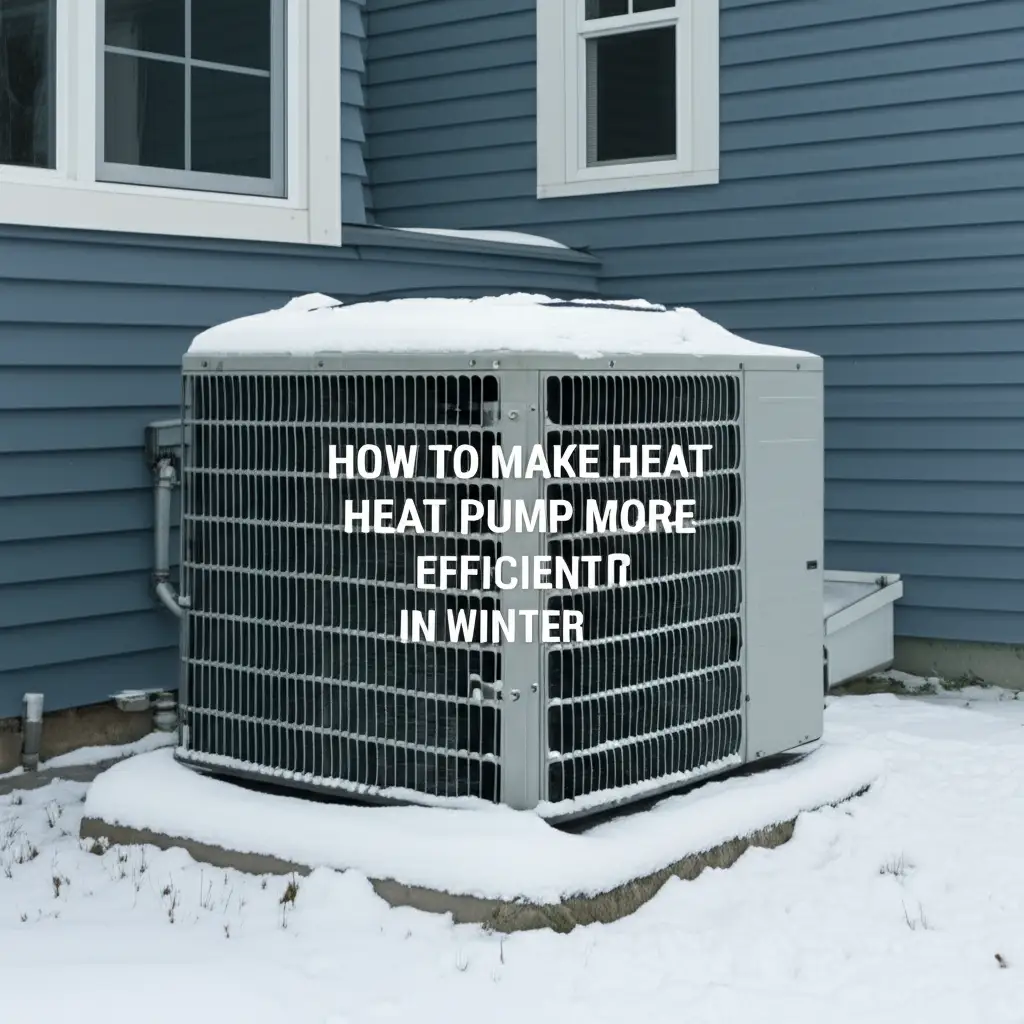· Katria Melrose · Pool Heating · 21 min read
Does Pool Heat Pump Work In Cold Weather
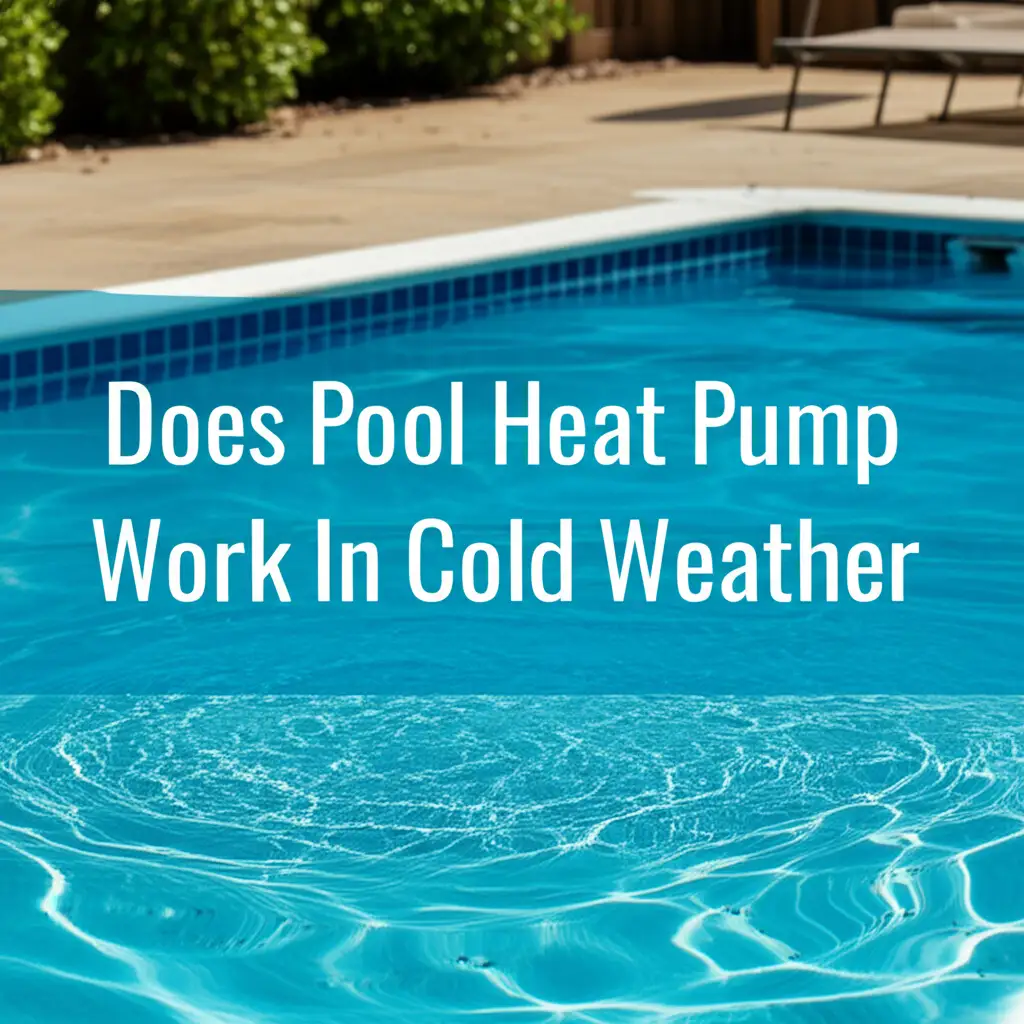
Does Pool Heat Pump Work In Cold Weather? Keeping Your Pool Warm
The idea of swimming in a warm pool when the air outside is chilly sounds like a dream. Many pool owners wonder if their pool heat pump can make this a reality. Can a pool heat pump work in cold weather, or do these systems struggle when temperatures drop? Understanding how these units perform in lower temperatures is key to extending your swimming season.
I want to help you understand the limits and capabilities of your pool heat pump in cooler climates. This article will explain how pool heat pumps generate heat, their performance in cold weather, and factors that influence their efficiency. We will also explore strategies to optimize your system and discuss when other heating solutions might be better. Get ready to learn how to keep your pool invitingly warm, even when the air gets crisp.
Takeaway
- Pool heat pumps can work in cold weather, but their efficiency decreases as air temperature drops.
- Most heat pumps perform best above 45-50°F (7-10°C).
- Factors like ambient temperature, humidity, and heat pump size impact cold weather performance.
- Proper installation, maintenance, and insulation help improve cold weather heating.
- Consider supplemental heating or winterizing below operating temperature limits.
How a Pool Heat Pump Works in Cold Weather
A pool heat pump works by extracting heat from the ambient air, transferring it to your pool water. It uses a fan to draw in air, which then passes over an evaporator coil. This coil contains a liquid refrigerant that absorbs heat from the air and turns into a gas. The gas then goes to a compressor, which increases its pressure and temperature. This hot, high-pressure gas moves to a condenser coil, where it transfers its heat to the cooler pool water circulating through it. As the refrigerant cools, it turns back into a liquid and the cycle repeats. This process makes a pool heat pump very energy efficient compared to other heating methods.
Understanding Heat Pump Efficiency in Low Temperatures
Pool heat pumps are generally very efficient at heating water, but their performance directly relates to the outdoor air temperature. These systems rely on extracting heat from the air. When the air temperature drops, there is less heat available for the heat pump to absorb. This means the unit must work harder to extract the necessary heat, reducing its overall efficiency. You will notice that your heat pump runs for longer periods and uses more electricity to reach the desired pool temperature in colder conditions.
Most standard pool heat pumps start to lose significant efficiency below 50°F (10°C). Some models can operate down to 40°F (4°C) or even slightly lower, but with significantly diminished output. Below a certain temperature threshold, typically around 40°F, many heat pumps will automatically shut off to prevent damage to the compressor. This protects the unit from operating outside its designed range.
The Coefficient of Performance (COP) is a measure of a heat pump’s efficiency. A COP of 5.0 means that for every unit of electricity consumed, the heat pump produces five units of heat energy. This COP value decreases as the ambient air temperature falls. For instance, a heat pump with a COP of 5.5 at 80°F (27°C) might drop to a COP of 3.0 or less at 45°F (7°C). This reduction in efficiency means higher operating costs for you. Learn more about how an electric pool heat pump works.
Modern heat pumps often feature advanced defrost cycles to handle cold weather. When the evaporator coil gets too cold, ice can form on it, blocking airflow and reducing heat transfer. The defrost cycle temporarily reverses the refrigerant flow or uses auxiliary heat to melt this ice. While effective, defrost cycles temporarily pause heating and can slightly reduce overall efficiency during operation in very cold conditions. This is similar to how a home air source heat pump operates in cold weather. Discover how an air source heat pump works in winter.
In summary, while a pool heat pump can operate in cold weather, its ability to heat your pool efficiently decreases as temperatures fall. Understanding these limitations helps you set realistic expectations for your pool heating in cooler months. It also guides decisions about supplemental heating or winterizing your pool.
Factors Affecting Pool Heat Pump Performance in Cold Climates
Several key factors determine how well your pool heat pump performs when the weather turns cold. These elements influence both the heat pump’s efficiency and its ability to maintain your desired pool temperature. I want to highlight these factors so you can better understand your system’s capabilities.
1. Ambient Air Temperature: This is the most crucial factor. A heat pump extracts heat from the air. When air temperatures drop, less heat is available for extraction. This forces the heat pump to work harder and longer, which reduces its Coefficient of Performance (COP) and increases electricity consumption. For example, a heat pump designed for warmer climates might struggle significantly when temperatures dip below 50°F (10°C). Some heat pumps have a minimum operating temperature, below which they will not run.
2. Humidity Levels: Humidity plays a role in how cold temperatures affect a heat pump. High humidity combined with low temperatures can lead to excessive ice formation on the evaporator coil. When ice builds up, it acts as an insulator, blocking airflow and reducing heat transfer. This triggers more frequent defrost cycles. While defrost cycles clear the ice, they temporarily halt heating and consume energy, further impacting efficiency. Understand why your pool heat pump might be freezing up.
3. Heat Pump Size and Capacity (BTUs/Ton): The size of your heat pump, measured in BTUs (British Thermal Units) or tons, directly impacts its heating capability. A heat pump that is undersized for your pool volume will struggle to heat the water in any weather, especially cold conditions. In colder climates, you may need a larger heat pump or one specifically designed for lower ambient temperatures. Proper sizing ensures the unit can meet the heat load required to warm your pool effectively.
4. Pool Size and Water Volume: A larger pool contains more water and requires more energy to heat. In cold weather, this heat loss is magnified by the greater surface area exposed to cool air. If your pool is very large, an appropriately sized heat pump will be even more critical for effective heating during cooler periods.
5. Pool Cover Usage: A pool cover is one of the most effective tools for retaining heat. Without a cover, your pool loses a significant amount of heat through evaporation and convection to the cold air. This forces your heat pump to run constantly to compensate for the heat loss, especially overnight. Using a solar cover or a solid safety cover helps trap heat, making the heat pump’s job much easier and more efficient in cold weather.
6. Desired Pool Temperature: The warmer you want your pool, the harder the heat pump must work, especially in cold weather. Maintaining a tropical 90°F (32°C) in chilly 50°F (10°C) air will require much more energy than keeping it at a comfortable 80°F (27°C). Setting a realistic target temperature for colder periods can help manage energy consumption.
7. Installation Quality and Location: Proper installation ensures optimal airflow and drainage around the unit. If the heat pump is in a cramped space or its airflow is obstructed, it cannot efficiently draw in ambient air. This will hurt its performance, especially in conditions where it already needs to work harder. The unit should also be installed on a level surface, away from anything that might block its vents.
Considering these factors helps you evaluate if your pool heat pump can meet your heating needs in cold weather. It also helps you identify areas for improvement or anticipate limitations.
Optimizing Your Pool Heat Pump for Cooler Climates
Even if you live in a region that experiences cooler temperatures, there are several ways to improve your pool heat pump’s efficiency and performance. My goal is to help you get the most out of your system, even when the air gets chilly.
1. Proper Sizing is Critical: The initial sizing of your heat pump is paramount. An undersized unit will always struggle to heat your pool, particularly in cold weather. Work with a qualified professional to ensure your heat pump is appropriately sized for your pool volume, desired temperature, and local climate. They consider factors like average ambient temperatures and wind conditions. A larger unit might cost more upfront, but it offers better performance and lower operating costs in the long run during cooler periods.
2. Invest in a Quality Pool Cover: This is perhaps the most effective strategy for heat retention. A significant amount of heat loss from a pool occurs through evaporation. A good quality solar cover or a solid thermal cover acts as a barrier, trapping heat in the water and preventing heat escape. Using a cover, especially overnight and when the pool is not in use, can reduce heat loss by 50-70%. This significantly reduces the workload on your heat pump, allowing it to maintain temperature more easily and efficiently in cold weather.
3. Maintain Your Heat Pump Regularly: Like any appliance, a pool heat pump benefits from regular maintenance. Keep the evaporator coil clean and free of debris, leaves, and dirt. A dirty coil reduces airflow and heat transfer efficiency. Ensure the fan blades are clear and spinning freely. Check refrigerant levels annually, as low refrigerant can severely impair heating performance. Regular maintenance by a professional helps ensure your unit operates at peak efficiency. This also helps you tell if your pool heat pump is working correctly.
4. Insulate Your Pool Plumbing: Heat can escape from the plumbing lines that carry warm water from the heat pump back to the pool. Insulating these pipes, especially those exposed to cold air, can minimize heat loss. This simple step ensures that more of the heat generated by your heat pump actually makes it into your pool.
5. Consider a Windbreak: If your pool is in a very windy area, wind can significantly increase heat loss from the water surface through convection. Planting shrubs, installing a fence, or creating a strategic windbreak can reduce wind exposure. This lessens the burden on your heat pump by helping the pool retain heat more effectively.
6. Set Realistic Temperature Expectations: While a heat pump can warm your pool in cold weather, trying to achieve tropical temperatures (e.g., 90°F) when the air is 50°F will be very inefficient and costly. Consider setting your desired pool temperature a few degrees lower during colder periods. Even a small reduction can lead to substantial energy savings.
7. Monitor Your Heat Pump’s Performance: Pay attention to how long your heat pump runs to maintain temperature. If it is running almost constantly or struggling to reach your desired temperature, it might be an indication of an issue or that the ambient temperatures are too low for efficient operation. This helps you decide if you need to adjust your expectations or seek professional help. Find out why your pool heat pump might not be heating.
By implementing these strategies, you can significantly enhance your pool heat pump’s ability to keep your pool warm and inviting, even when the weather outside is not. These steps help you extend your swimming season efficiently.
Signs Your Pool Heat Pump Struggles with Cold Weather
It’s important to recognize when your pool heat pump is having trouble keeping up with the cold. Ignoring these signs can lead to higher energy bills, reduced comfort, or even damage to the unit. I want to make sure you know what to look for.
1. Pool Not Reaching Desired Temperature: This is the most obvious sign. If your heat pump runs for extended periods but fails to bring the pool water to your set temperature, or struggles to maintain it, cold weather is likely a factor. The unit is working, but the heat loss from the pool to the cold air simply outpaces its heating capacity.
2. Constant Running or Longer Cycles: A heat pump that normally heats your pool in a few hours might start running almost continuously during cold snaps. This means it is struggling to extract enough heat from the frigid air to meet your pool’s heating demands. Continuous operation leads to higher electricity bills and increased wear on the compressor. Find out how much a pool heat pump costs to run.
3. Ice Formation on the Evaporator Coils: While some ice during a defrost cycle is normal, excessive and persistent ice buildup on the outdoor coils indicates a problem. This often happens when the ambient air is too cold and moist, or the unit is struggling to efficiently transfer heat. Ice acts as an insulator, further reducing the heat pump’s ability to absorb heat from the air. This can also indicate a refrigerant issue.
4. Frequent Defrost Cycles: All modern heat pumps have a defrost cycle. However, if your unit is going into defrost mode much more frequently than usual, especially on colder days, it suggests it’s struggling. Each defrost cycle temporarily stops heating the pool and consumes energy to melt the ice, impacting overall efficiency.
5. Increased Energy Bills: If you notice a sudden spike in your electricity bill without a significant increase in pool usage, your heat pump might be the culprit. When it struggles in cold weather, it uses more electricity to extract less heat, leading to higher operating costs.
6. Error Codes or Shut-offs: Many modern heat pumps have diagnostic features. If your unit displays error codes related to low temperature, low pressure, or compressor issues, or if it frequently shuts off on its own, it is likely reaching its operational limits for cold weather. Some heat pumps will automatically shut down below a certain temperature to protect internal components. Understand why your pool heat pump keeps shutting off.
7. Weak or Cold Air from the Fan: While the air exhausted from a heat pump will always be cooler than the intake air, if it feels significantly colder than usual, it may indicate inefficient heat transfer. This is a subtle sign that the heat pump is not extracting much heat from the air.
Recognizing these signs helps you make informed decisions. You can then adjust your pool heating strategy, investigate potential issues, or consider alternative heating methods for true cold weather.
When to Consider Alternatives or Supplemental Heating for Your Pool
While pool heat pumps are efficient, they do have limitations, especially in very cold weather. Sometimes, a heat pump alone is not enough to keep your pool warm, or it becomes too costly to operate. I’ve found it’s crucial to know when to look at other options.
1. Consistently Low Ambient Temperatures: If your region experiences prolonged periods of air temperatures below 45-50°F (7-10°C), a standard air-source pool heat pump will become increasingly inefficient. Below its minimum operating temperature, it may not run at all. In such climates, relying solely on a heat pump can lead to high energy bills and a constantly cold pool.
2. Desire for Rapid Heating: Heat pumps heat water gradually. They are not designed for quick temperature increases, especially in cold weather. If you need to heat your pool quickly for a spontaneous swim, like after a cold front, a heat pump might not deliver the speed you need.
3. Very Large Pools in Cold Climates: Heating a very large pool in a cold environment with just a heat pump can be a challenge. The sheer volume of water and the significant heat loss to the cold air might overwhelm even a properly sized heat pump.
Alternatives and Supplemental Heating Options:
- Gas Heaters: These are very powerful and can heat a pool quickly, regardless of the ambient air temperature. Gas heaters burn natural gas or propane to generate heat directly. They are excellent for fast heating or for use in very cold conditions where a heat pump is ineffective. However, they are generally much more expensive to operate than heat pumps due to the cost of fuel. You might use a gas heater as a “booster” to quickly raise the temperature, then rely on the heat pump for maintenance.
- Electric Resistance Heaters: These heaters work by passing electricity through a heating element, which directly transfers heat to the water. Like gas heaters, they are unaffected by air temperature and can heat quickly. However, they are the least efficient option for ongoing heating, as they convert electricity directly into heat. This makes them very expensive to run continuously compared to heat pumps. They are best suited for small pools, spas, or as a backup for short periods.
- Solar Pool Heaters: These systems use solar collectors to absorb energy from the sun and transfer it to your pool water. They are very eco-friendly and have low operating costs once installed. However, their effectiveness depends entirely on sunlight availability. They may not provide enough heat on cloudy days or in very cold weather, especially if direct sunlight is limited. They are often used to extend the swimming season in warmer months or to supplement another heating system.
- Geothermal Pool Heat Pumps: Unlike air-source heat pumps, geothermal systems draw heat from the stable underground temperature, which remains consistent regardless of surface air temperatures. This makes them incredibly efficient and effective even in very cold climates. However, they have a much higher upfront installation cost due to the need for ground loops. Explore how a geothermal heat pump works in winter.
- Hybrid Systems: Some pool owners combine heating methods. For example, you might use a heat pump for regular heating during milder cold periods and switch to a gas heater for quick boosts or when temperatures drop too low for the heat pump to be efficient. This offers flexibility and cost-effectiveness.
Deciding which option is right for you depends on your local climate, desired swimming season, budget, and energy costs. Always weigh the upfront costs against the long-term operating expenses and heating performance.
Maintenance Tips for Cold Weather Pool Heat Pump Use
Proper maintenance becomes even more critical when you operate your pool heat pump in cold weather. Good care helps your unit perform efficiently and extends its lifespan. I’ve gathered key tips to guide you.
1. Keep Coils Clean: The evaporator coil is where the magic happens – absorbing heat from the air. In cold weather, dirt, leaves, and debris can accumulate, insulating the coil and reducing its ability to absorb heat. Regularly inspect and clean the coils with a soft brush or a garden hose. A clean coil ensures optimal airflow and heat transfer, which is vital when heat is scarce.
2. Ensure Unobstructed Airflow: For a heat pump to work efficiently, it needs a continuous supply of ambient air. Make sure there are no obstructions around the unit, such as snow, ice, fallen leaves, or overgrown shrubs. Maintain the recommended clearance around all sides of the unit, usually at least 2 feet. Blocked airflow severely reduces efficiency, forcing the unit to work harder.
3. Check for Ice Buildup (and Defrost Cycle): While your heat pump has a defrost cycle, excessive ice buildup can still be an issue in very cold and humid conditions. If you see persistent or heavy ice on the coils, ensure the defrost cycle is activating correctly. If ice remains or re-forms quickly, it might signal a problem with the defrost system or low refrigerant levels. Never try to chip off ice manually, as this can damage the coils.
4. Monitor Refrigerant Levels: The refrigerant is the lifeblood of your heat pump. Low refrigerant levels, usually due to a leak, can drastically reduce heating performance and strain the compressor, especially in cold weather. If your unit is struggling to heat or if you notice unusual noises, have a qualified HVAC technician check the refrigerant levels. This is not a DIY task due to environmental regulations.
5. Protect the Unit from Extreme Cold/Snow: In areas with heavy snowfall, consider building a simple cover or enclosure that protects the top of the unit from direct snow accumulation while still allowing ample airflow around the sides. Do not completely enclose the unit, as this will trap cold air and impede operation. Clear snow away from the heat pump’s base and sides promptly.
6. Winterize if Not in Use Below Operating Temperatures: If you decide not to use your pool heat pump during the coldest months, or if temperatures consistently drop below its minimum operating threshold (e.g., 40°F / 4°C), it is important to properly winterize the unit. This involves draining water from the heat exchanger to prevent freezing and cracking, turning off power, and covering the unit. Following the manufacturer’s winterization guidelines protects your investment.
7. Schedule Professional Inspections: Even with your best efforts, an annual professional inspection is invaluable. A technician can identify minor issues before they become major problems, check electrical connections, assess compressor health, and verify overall system efficiency. They can also advise on specific cold-weather settings or optimizations for your model.
By following these maintenance tips, you can ensure your pool heat pump is ready to tackle colder weather, providing reliable and efficient heating for as long as possible. Good care translates to better performance and fewer headaches.
FAQ Section
Q: What is the lowest temperature a pool heat pump can operate? A: Most standard pool heat pumps can technically operate down to about 40-45°F (4-7°C). However, their heating efficiency significantly decreases below 50°F (10°C). Below this point, the unit will produce less heat and consume more electricity. Many models have an automatic shut-off to protect the compressor from damage if temperatures drop too low.
Q: Does cold air coming out of a heat pump mean it’s not working? A: No, cold air coming from the fan outlet of a pool heat pump is normal. The heat pump works by extracting heat from the ambient air, so the air it expels is colder because its heat has been removed. However, if the air feels unusually cold or if the pool is not heating, it might indicate an issue with the heat pump’s efficiency or a problem like low refrigerant.
Q: How do I protect my pool heat pump in winter? A: To protect your pool heat pump in winter, first, ensure the water is drained from the heat exchanger to prevent freezing. Turn off the power supply to the unit at the breaker. You can place a breathable, waterproof cover over the unit to protect it from harsh weather elements like snow and ice, but ensure it allows for proper ventilation to prevent moisture buildup.
Q: Is it worth running a pool heat pump in winter? A: It depends on your climate and desired pool temperature. In mild winter climates where temperatures rarely drop below 45-50°F (7-10°C), it might be worthwhile. However, in regions with consistently colder winters, running a heat pump becomes very inefficient and costly. Supplemental heating or full winterization is often more practical.
Q: Can a pool heat pump freeze? A: Yes, the evaporator coils of a pool heat pump can freeze if the ambient air is too cold and humid, or if there’s an issue like low refrigerant or poor airflow. While modern heat pumps have defrost cycles to melt ice, persistent freezing indicates a problem. The water in the heat exchanger can also freeze and cause damage if the unit is not properly drained during winterization.
Q: Why does my pool heat pump keep shutting off in cold weather? A: A pool heat pump often shuts off in cold weather to protect its internal components. This is typically due to reaching its minimum operating temperature threshold, where the system cannot efficiently extract enough heat or risks damage to the compressor. Other reasons could include a pressure switch trip due to low refrigerant or a faulty sensor.
Conclusion
So, does a pool heat pump work in cold weather? The answer is nuanced. Yes, it can operate in cooler temperatures, extending your swimming season beyond the warmest months. However, its efficiency and heating output decrease significantly as air temperatures drop. These units perform best when ambient temperatures are above 50°F (10°C), becoming less cost-effective and sometimes unable to reach desired temperatures in very cold conditions.
To get the most out of your pool heat pump in cooler climates, focus on proper sizing, consistent use of a good quality pool cover, and diligent maintenance. These steps help your unit perform better and retain more heat in your pool. When temperatures consistently fall below 40-45°F (4-7°C), or if you need rapid heating, I recommend considering supplemental heating options like a gas heater or exploring geothermal solutions.
Ultimately, understanding your specific climate and heat pump’s limitations will help you create a comfortable, inviting pool environment for as long as possible. Evaluate your needs and consult with a pool professional to determine the best heating strategy for your home.


